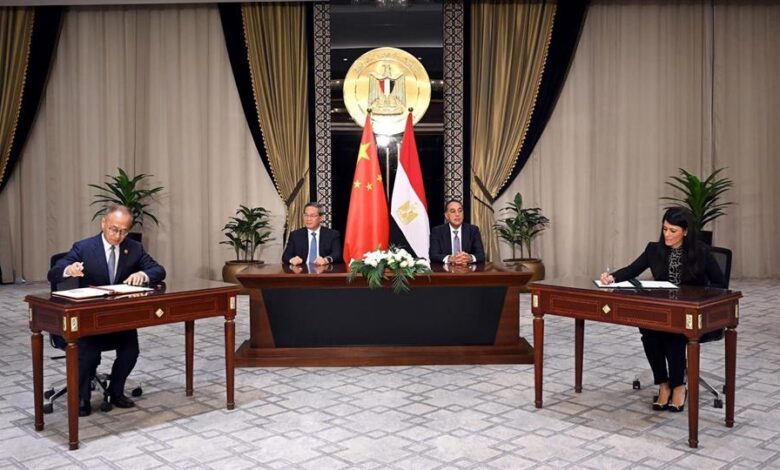
Minister of Planning, Economic Development and International Cooperation, Rania al-Mashat, and the Chairman of the China International Development Cooperation Agency (CIDCA), Chen Xiaodong on Thursday signed five new cooperation documents aimed at boosting Egyptian-Chinese strategic relations.
These include a Memorandum of Understanding for the first development cooperation strategy between the two countries for 2025/2029, and the first phase of the debt-for-development swap program.
The documents were signed at the Cabinet headquarters in the New Administrative Capital. The signing was witnessed by Egyptian Prime Minister Mostafa Madbouly, and Premier of the State Council of China, Li Qiang.
The two sides signed an MoU on the first development cooperation strategy between Egypt and China from 2025-2029. This aims to promote development cooperation between the two countries in line with Egypt’s National Development Strategy 2030 and the Global Development Initiative (GDI).
The MoU stipulates enhancing cooperation in priority areas for both sides, including healthcare, connectivity, climate change and green development, digital economy, space, education, and industrial localization, which will serve as an opportunity for joint initiatives, as well as any other areas that the two sides may agree upon during this period.
The strategy also encourages exploration of additional projects that align with the GDI and Egypt’s Vision 2030, including those that promote green transformation and industrial localization.
This initiative builds upon the MoU signed by Mashat during her participation in the GDI meetings in July 2023.
The two parties also signed the framework agreement for the first phase of a Debt Swap for Development Program, activating an MoU originally signed in October 2023.
Egypt is the first country with which CIDCA has entered into this kind of development financing agreement.
The Governor of the Central Bank of Egypt (CBE) Hassan Abdalla also signed a MoU with Governor of the People’s Bank of China (PBOC) Pan Gongsheng, on Friday, to boost joint collaboration across various areas of mutual interest between the two banks.
The signing ceremony at the Egyptian Cabinet was witnessed by the Egyptian Prime Minister Mostafa Madbouly, and Li Qiang, Premier of the State Council of the People’s Republic of China, alongside senior officials from both countries.
The MoU aims to promote the use of local currency settlements for cross-border financial and trade transactions, while facilitating direct investments between both sides to foster economic integration. It also includes provisions to strengthen cooperation on Central Bank Digital Currencies (CBDC). Additionally, it supports financial innovation using modern technology through conducting joint research and studies, as well as exchanging technical information and expertise.
Abdalla affirmed that “This MoU reflects the evolution of the historic ties between Egypt and China. It demonstrates both institutions’ commitment to strengthening partnerships between their respective financial institutions in light of global economic developments.”
Further agreements
Mashat also signed the exchange of letters for a feasibility study grant for the national project to develop the prosthetics system, amounting to 1,520,000 Chinese Yuan.
This project aims to make Egypt a regional hub in the Middle East and Africa for providing prosthetic limbs and assistive devices for people with disabilities, as well as possessing the manufacturing capability for them according to internationally approved standard specifications.
Mashat, and the Chairman of the CIDCA, also signed an MoU on strengthening cooperation in human resources development, complementing the Ministry’s role as a national coordinator for the annual training program provided by the Chinese side to the Egyptian government.
Through this, the Chinese side will provide up to 2,000 training opportunities for Egypt in bilateral and multilateral training programs during the period from 2025-2027.
The two sides also signed exchange of letters for the grant for the establishment of a Level-III Biosafety Laboratory, which will provide a secure environment for research, diagnosis, and the development of control measures for highly hazardous pathogens that require strict containment procedures, such as highly infectious viruses like COVID-19 and its variants.




